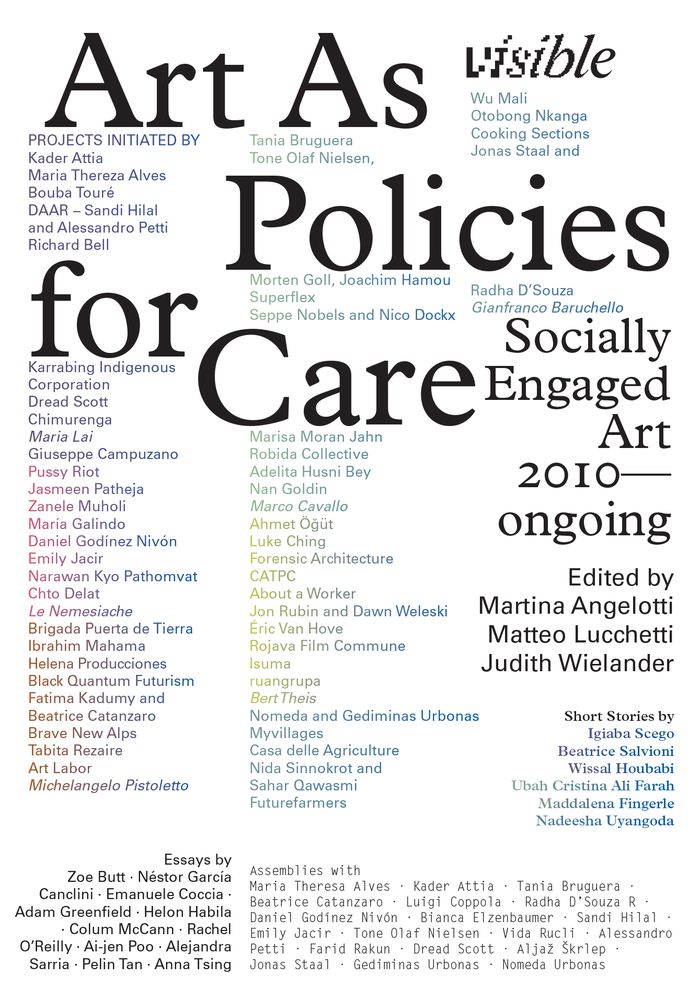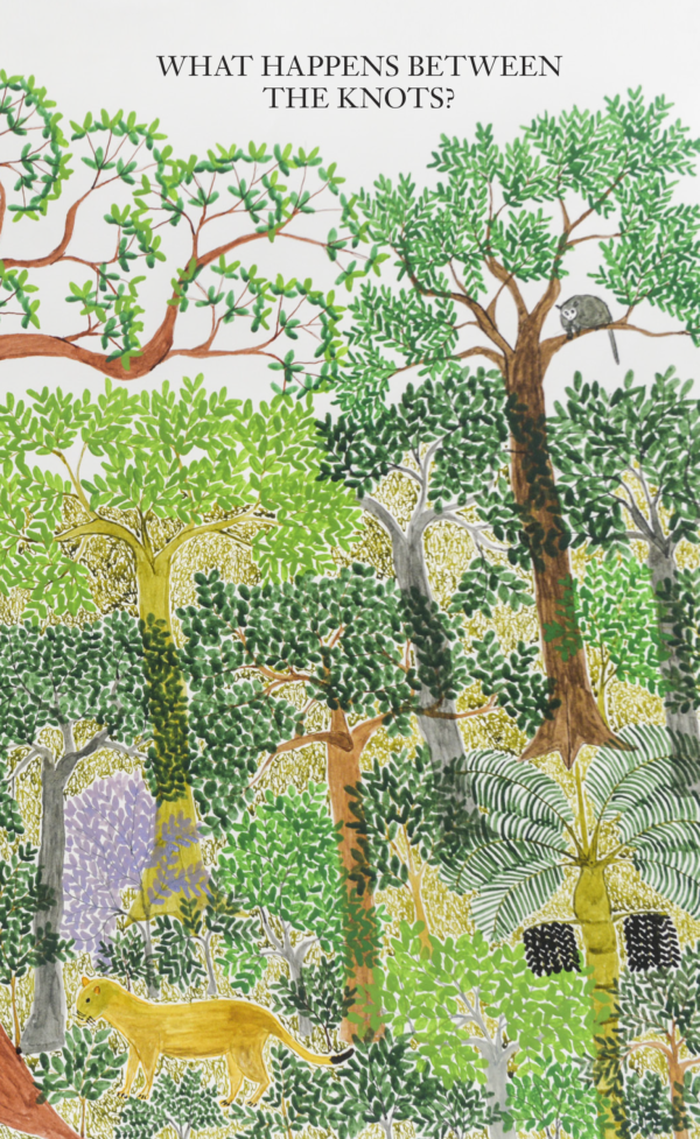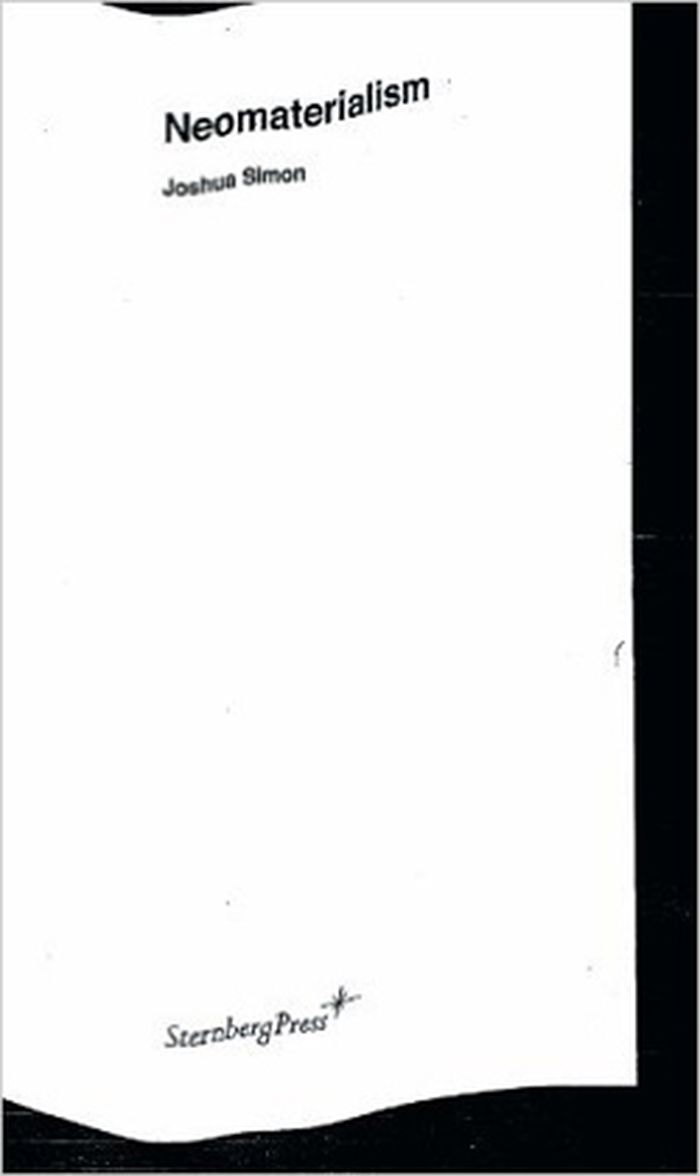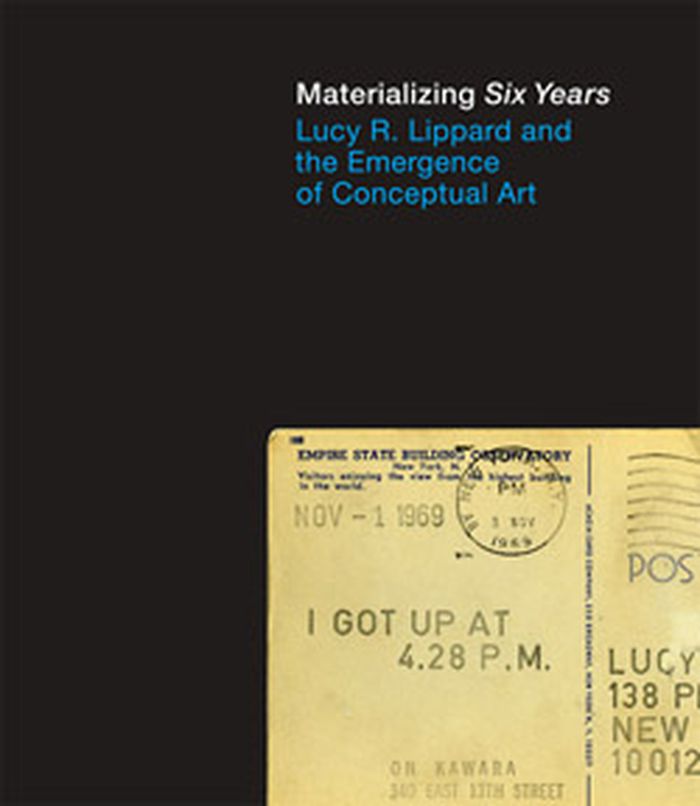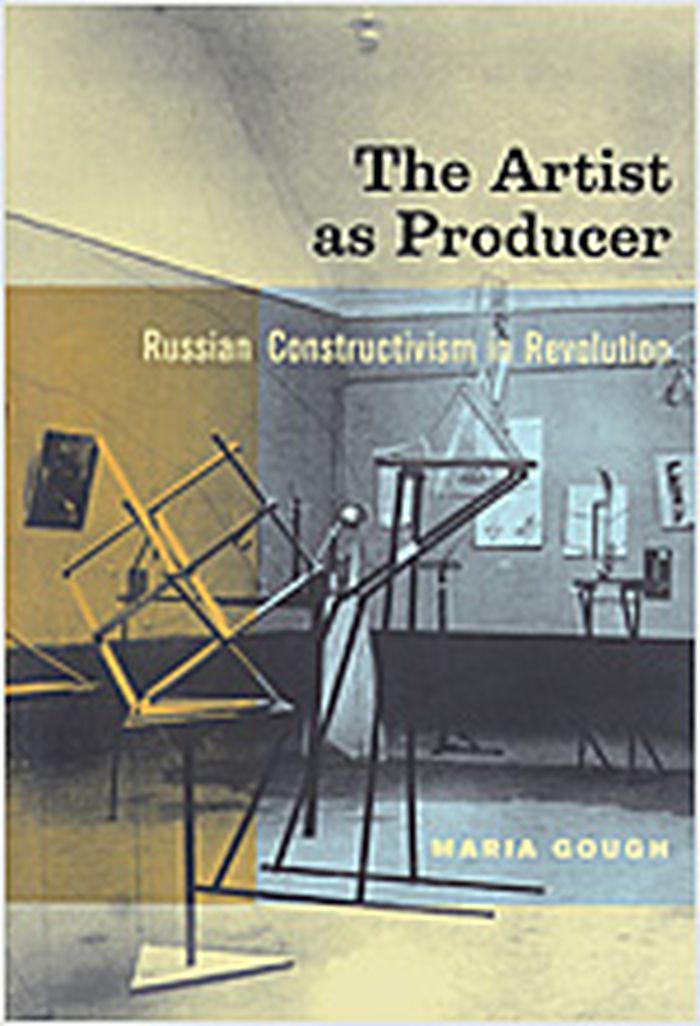livres
Description:
79 pages : illustrations (some color) ; 21 cm
[Buenos Aires] : Nobuko, 2012.
El fin de la arquitectura : la estética de la desaparición en la arquitectura y el diseño contemporáneo / Álvaro Javier Míguez.
Actions:
Exemplaires:
Description:
79 pages : illustrations (some color) ; 21 cm
livres
[Buenos Aires] : Nobuko, 2012.
livres
Description:
703 pages : illustrations (some color) ; 28 cm
Karlsruhe : ZKM ; London : MIT Press, [©2002]
Iconoclash / edited by Bruno Latour and Peter Weibel.
Actions:
Exemplaires:
Description:
703 pages : illustrations (some color) ; 28 cm
livres
Karlsruhe : ZKM ; London : MIT Press, [©2002]
livres
Description:
viii, 368 pages : illustrations (chiefly color) ; 26 cm
Cambridge, Mass. : The MIT Press, [2011], ©2011
Artists' magazines : an alternative space for art / Gwen Allen.
Actions:
Exemplaires:
Description:
viii, 368 pages : illustrations (chiefly color) ; 26 cm
livres
Cambridge, Mass. : The MIT Press, [2011], ©2011
livres
Description:
xiv, 386 pages : illustrations, plans ; 23 cm
Cambridge, Massachusetts : The MIT Press, [2024], ©2024
The feeling of space / Christopher Bardt.
Actions:
Exemplaires:
Description:
xiv, 386 pages : illustrations, plans ; 23 cm
livres
Cambridge, Massachusetts : The MIT Press, [2024], ©2024
Material utopias
$34.95
(disponible sur commande)
Résumé:
In the slipstream of conceptual art, the intimate interweaving of meaning and materialization in art and design came to be discredited in the second half of the twentieth century. The master’s program Material Utopias at the Sandberg Instituut put an end to this tradition by abolishing the unproductive hierarchy separating "concept" and "making," "content" and "process."(...)
Material utopias
Actions:
Prix:
$34.95
(disponible sur commande)
Résumé:
In the slipstream of conceptual art, the intimate interweaving of meaning and materialization in art and design came to be discredited in the second half of the twentieth century. The master’s program Material Utopias at the Sandberg Instituut put an end to this tradition by abolishing the unproductive hierarchy separating "concept" and "making," "content" and "process." In this publication, various authors reflect on the history of dematerialization and deskilling, the manifold meanings of materials in art and design, and the challenges for education when the innovative power of the artistic process is celebrated.
Théorie de l’art
$52.00
(disponible sur commande)
Résumé:
The book "Visible: Art as policies for care. Socially engaged art (2010–Ongoing)" was born from the editors' enduring curatorial research into long-term situated art projects that exist within the social sphere, beyond the logic of the traditional art system, confronting unjust systems, and prefiguring novel visions for living together. The socially engaged art projects(...)
novembre 2024
Visible – Art as policies for care: Socially engaged art (2010-Ongoing)
Actions:
Prix:
$52.00
(disponible sur commande)
Résumé:
The book "Visible: Art as policies for care. Socially engaged art (2010–Ongoing)" was born from the editors' enduring curatorial research into long-term situated art projects that exist within the social sphere, beyond the logic of the traditional art system, confronting unjust systems, and prefiguring novel visions for living together. The socially engaged art projects collected here hold a significant place in the constantly evolving trans-local art scene of the past two decades, and form a lens through which to observe changing realities and their urgencies; they redefine the concept of art in light of current climatic, political, and social changes and foster the dematerialization of the artwork in processes that become policies of culture and care.
$20.00
(disponible sur commande)
Résumé:
This is the third book in the annual “A Series of Open Questions” published by CCA Wattis Institute for Contemporary Arts and Sternberg Press. Each book in the series includes newly commissioned writing as well a selection of perspectives, images, and references related to the Wattis’s year-long research seasons dedicated to single artists. Each book takes the work of a(...)
What happens between the knots? A series of open questions
Actions:
Prix:
$20.00
(disponible sur commande)
Résumé:
This is the third book in the annual “A Series of Open Questions” published by CCA Wattis Institute for Contemporary Arts and Sternberg Press. Each book in the series includes newly commissioned writing as well a selection of perspectives, images, and references related to the Wattis’s year-long research seasons dedicated to single artists. Each book takes the work of a single artist as its point of departure and spirals outward from there to create an expansive and carefully edited ecosystem of ideas and voices. This third volume is informed by themes found in the work of Cecilia Vicuña, including ecofeminism, indigenous forms of knowledge, poetry and politics, dissolution and extinction, exile, dematerialization, regeneration, and environmental responsibility.
Théorie de l’art
Neomaterialism
$36.00
(disponible sur commande)
Résumé:
Since the so-called dematerialization of currencies and art practices in the late 1960s and early 1970, we have witnessed a move into what Joshua Simon calls an economy of neomaterialism. With this, several shifts have occurred: the focus of labor has moved from production to consumption, the commodity has become the historical subject, and symbols now behave like(...)
Neomaterialism
Actions:
Prix:
$36.00
(disponible sur commande)
Résumé:
Since the so-called dematerialization of currencies and art practices in the late 1960s and early 1970, we have witnessed a move into what Joshua Simon calls an economy of neomaterialism. With this, several shifts have occurred: the focus of labor has moved from production to consumption, the commodity has become the historical subject, and symbols now behave like materials. Neomaterialism explores the meaning of the world of commodities, and reintroduces various notions of dialectical materialism into the conversation on the subjectivity and vitalism of things. Here, Simon advocates for the unreadymade, sentimental value, and the promise of the dividual as a means for a vocabulary in this new economy of meaning. Reflecting on general intellect as labor and the subjugation of an overqualified generation to the neofeudal order of debt finance—with a particular focus on dispossession and rent economy, post-appropriation display strategies and negation, the barricade and capital’s technocratic fascisms—Neomaterialism merges traditions of epic communism with the communism that is already here.
Théorie/ philosophie
$48.95
(disponible sur commande)
Résumé:
In 1973 the critic and curator Lucy R. Lippard published Six Years, a book with possibly the longest subtitle in the bibliography of art: The dematerialization of the art object from 1966 to 1972: a cross-reference book of information on some esthetic boundaries: consisting of a bibliography into which are inserted a fragmented text, art works, documents, interviews, and(...)
Materializing Six Years : Lucy R. Lippard and the emergence of Conceptual Art
Actions:
Prix:
$48.95
(disponible sur commande)
Résumé:
In 1973 the critic and curator Lucy R. Lippard published Six Years, a book with possibly the longest subtitle in the bibliography of art: The dematerialization of the art object from 1966 to 1972: a cross-reference book of information on some esthetic boundaries: consisting of a bibliography into which are inserted a fragmented text, art works, documents, interviews, and symposia, arranged chronologically and focused on so-called conceptual or information or idea art with mentions of such vaguely designated areas as minimal, anti-form, systems, earth, or process art, occurring now in the Americas, Europe, England, Australia, and Asia (with occasional political overtones) edited and annotated by Lucy R. Lippard. Six Years, sometimes referred to as a conceptual art object itself, not only described and embodied the new type of art-making that Lippard was intent on identifying and cataloging, it also exemplified a new way of criticizing and curating art. Nearly forty years later, the Brooklyn Museum takes Lippard’s celebrated experiment in curated concatenation as a template, turning a book that resembled an exhibition into an exhibition materializing the ideas in her book. The artworks and essays featured in this publication recall the thrill that was tangible in Lippard's original documentation, reminding us that during the late sixties and early seventies all possible social and material parameters of art (making) were played with, worked over, inverted, reduced, expanded, and rejected. By tracing Lippard’s own activities in those years, the book also documents the early blurring of boundaries among critical, curatorial, and artistic practices. With more than 200 images of work by dozens of artists (printed in color throughout), this book brings Lippard’s curatorial experiment full circle.
Théorie de l’art
$59.95
(disponible sur commande)
Résumé:
"The Artist as Producer" reshapes our understanding of the fundamental contribution of the Russian avant-garde to the development of modernism. Focusing on the single most important hotbed of Constructivist activity in the early 1920s - the Institute of Artistic Culture (INKhUK) in Moscow - Maria Gough offers a powerful reinterpretation of the work of the first group of(...)
The artist as producer : Russian Constructivism in revolution
Actions:
Prix:
$59.95
(disponible sur commande)
Résumé:
"The Artist as Producer" reshapes our understanding of the fundamental contribution of the Russian avant-garde to the development of modernism. Focusing on the single most important hotbed of Constructivist activity in the early 1920s - the Institute of Artistic Culture (INKhUK) in Moscow - Maria Gough offers a powerful reinterpretation of the work of the first group of artists to call themselves Constructivists. Her lively narrative ranges from famous figures such as Aleksandr Rodchenko to others who are much less well known, such as Karl Ioganson, a key member of the state-funded INKhUK whose work paved the way for an eventual dematerialization of the integral art object. Through the mining of untapped archives and collections in Russia and Latvia and a close reading of key Constructivist works, Gough highlights fundamental differences among the Moscow group in their handling of the experimental new sculptural form - the spatial construction - and of their subsequent shift to industrial production. "The Artist as Producer" upends the standard view that the Moscow group's formalism and abstraction were incompatible with the sociopolitical imperatives of the new Communist state. It challenges the common equation of Constructivism with functionalism and utilitarianism by delineating a contrary tendency toward non-determinism and an alternate orientation to process rather than product. Finally, the book counters the popular perception that Constructivism failed in its ambition to enter production by presenting the first-ever case study of how a Constructivist could, and in fact did, operate within an industrial environment. "The Artist as Producer" offers provocative new perspectives on three critical issues - formalism, functionalism, and failure - that are of central importance to our understanding not only of the Soviet phenomenon but also of the European vanguards more generally.

